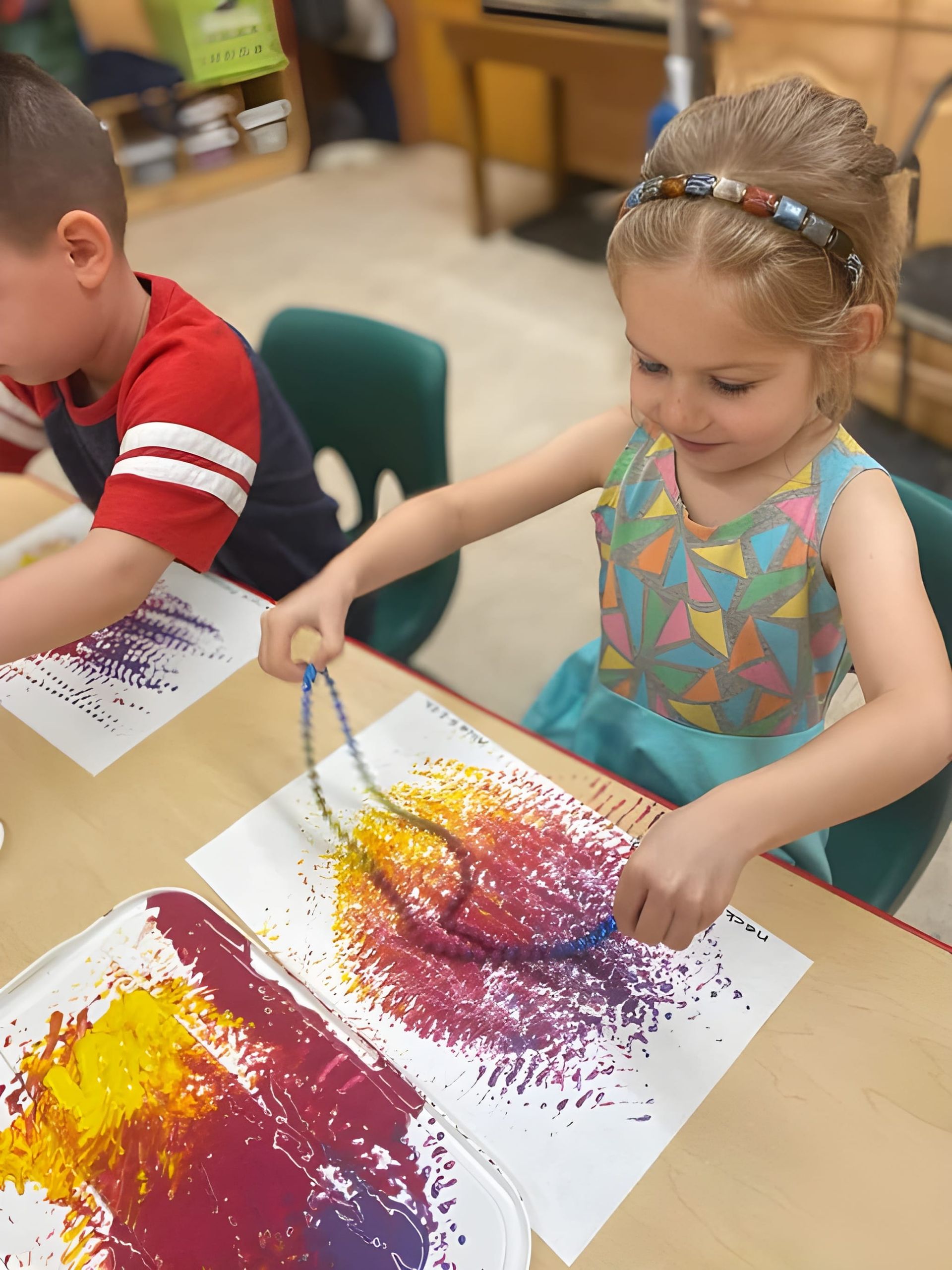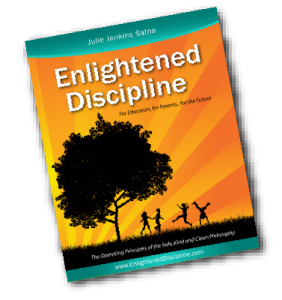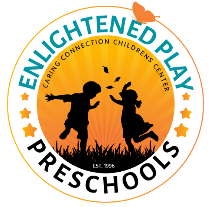
Our program offers the best in balance with a structured schedule in a warm and friendly environment.
We operate within the confines of what is developmentally appropriate for young children, while affirming progress through various learning styles; visual, auditory and kinesthetic. Our program focuses on creating a well-rounded curriculum filled with language concepts, pre-science, pre-math and healthy physical fitness. Our number one goal is always the development of strong social skills in an emotionally safe environment.
Children in our preschool program are divided into individual classes: the Pals, the Friends and the Partners. These class groups meet in small groups for Circle Time, Focus and Outdoor play and overlap with one class for Art and Social play. All children join together for Morning Greeting and for Music Time.
Social Play
We do not use the term “free play” as that implies no limits. Our environment has several centers for specific types of play including: blocks, fine motor manipulatives, dress-ups, coloring table/writing center, books, puzzles, practical life activities. These centers change and evolve throughout the year.
Indoor Social Play and Outdoor Social Play are opportunities offered throughout the course of the day, in balance with other program times. We limit each outdoor play time to about 20-30 minutes to better align our program with young children’s attention span.
In the warm weather months we will include various water activities; water play, splash pools and so forth. Children should be prepared for getting clothing wet and have a change of clothes or swim wear. We allow barefootin’ during these months and use it as another opportunity for understanding our bodies and the world…like, “the cement is hot and may be slippery.”
Music
While music is alive and well at Enlightened Play Preschools throughout the day, we have one special time right before lunch that we wind down, take this opportunity to wash up and join together in a combined community for music. Upbeat and fun, this is a happy ending to a morning preschool program, too.
Afternoon Carousel
“Move It!” – “Mix It/Mess It!” – “Do It!”
In the afternoon program at Enlightened Play Preschools, we have a thrilling set of activities that offer children (who have already been in care all day) new adventures and excitement. One of the differences between our morning and afternoon programs is that afternoon is multi-age groups. In the AM programs, children have class time with their peers of generally similar age and development. In the afternoon, ages 2-5 are mingled, even when separated into their Carousel groups. This adds another element of social development, modeling, and exchange between disparate ages. Older children can lead and younger children raise their expectations, within their personal limits.
The carousel operates with three concurrent activities that the children in small groups rotate through. One Carousel is “Move It!” a gross motor activity where teachers may do yoga, large motor group games, or activities such as tumbling or dancing. The second Carousel is “Do It! Which takes a new look at small motor activities, such as weaving with paper or beading. Then the third Carousel is “Mix It/Mess It! True to its name this is more art or science or sensory-based activity from painting with flower petals to using eyedroppers and watercolor.
The brilliance of Carousel is that it makes for an exciting and interesting program as energies typically have fallen. This brings the interest of the children and teachers, alike up and creates happy energy, renews, and peaks interest right before their parents pick up.
Carousel also provides a stunningly exciting program for any child who attends for only an afternoon or PM program. We strive very hard at Caring Connection to provide more than ‘just day care’. We want children to be interested, learning, and wondering through the entire day.
Story Break
As the day comes to an end, we group up for a winding downtime of Story Break before our final evening snack. This is a great opportunity to end outside play, clean up and settle down before the bulk of parents arrive.
Group Games
Planned during the later evening this allows a gathering of the few children left at school to enjoy some social time while waiting for their parent to arrive.
Art
Art is a mixed bag of fun, hands-on and creative expression. At CCCC Art activities are separate from crafts. Art is an opportunity to use a variety of tools and textures, various media for open-ended creation. Crafts are sometimes offered during our Focus Time.
Circle Time
Circle Time is our language and vocabulary class time. Each class will greet, read and discuss the weekly theme and whatever words and concepts the children may bring to their teacher’s attention.
Focus
Focus is a program time developed so that teachers can clearly focus on a specific set of skills that are crucial. Therefore Focus varies widely from day to day and class to class: group games, following directions, memory to writing, cooking or fine motor skills. Focus activities will feel like games and projects but will teach: listening skills, pre-math, pre-reading large motor development and more.
Infant and Toddler
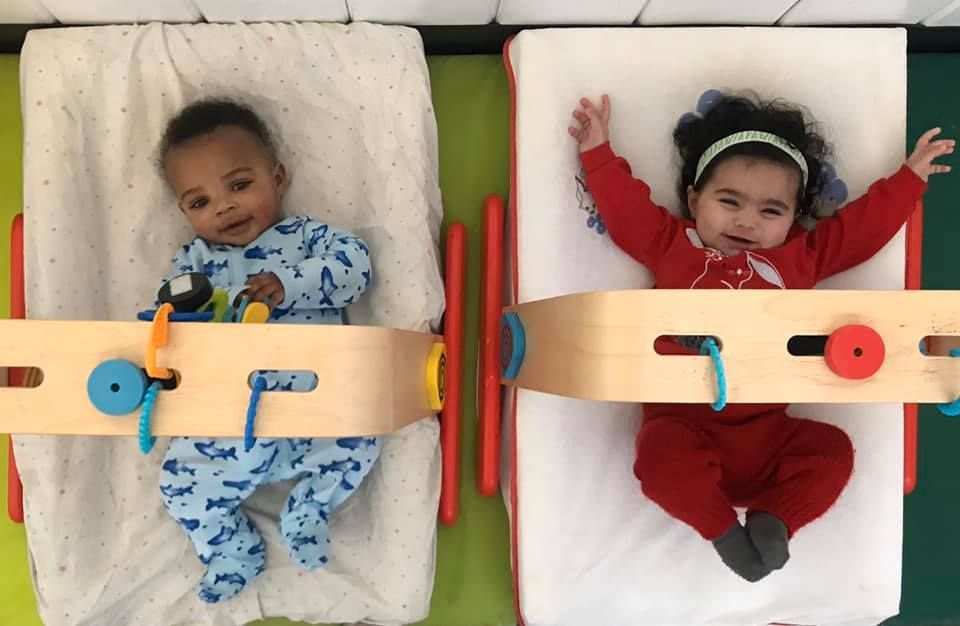
PlaySets
In our infant/toddler room we don’t just feed, diaper, and nap children. We have a full Infant and Toddler program that we call PlaySets, developed by Julie Jenkins Sathe, our Executive Director.
Our program will vary widely depending on how many children are attending and by their varied ages and stages. In theory, PlaySets offers two ‘sets of play’ (activities) that the two teachers offer concurrently, in adjacent areas. This allows the children to choose between the PlaySets offered, with teacher guidance. The offered PlaySets are similar, yet not the same. The young infant/toddler normally has a short attention span. PlaySets works with that limited attention span by providing two supervised PlaySets that will keep their interest for twice as long, and allow the teachers to have a role in creating a safe and stable environment.

Sample PlaySets Program
Life Play
Folding Washcloths
Bathing Baby Dolls
Motor Play
Rolling Balls
Dancing with Scarves
Dramatic Play
Trying on Hats
Making Faces in the Mirror
Creative Play
Pudding Painting
Wet Chalk on Paper
Infants and Toddlers are so capable of doing many things. It’s sometimes difficult for parents to make room for their own child to try new things. It’s natural because parents are always geared to care for their children. We want them to try, succeed….try….and try again. And our environment is made for it, whereas it is not always feasible or prudent at home.
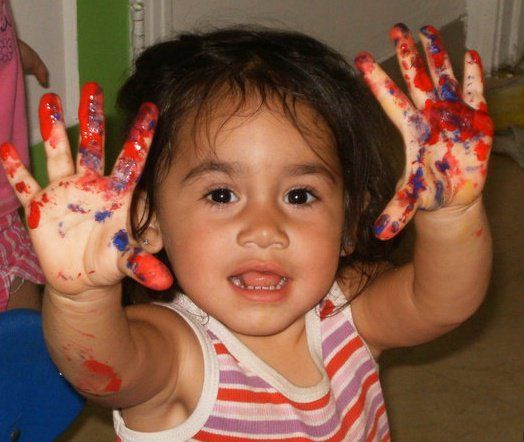
Nothing wrong with a little mess
At Enlightened Play Preschools, there is nothing punitive in making a mess, spilling, or missing the mark. Trying and trying again, sampling and spitting out, missing the paper, spilling the juice; are all examples of trying again. Standing up and falling down, wanting a toy, and pouring out all the toys to get it are all developmental ways of trying. We allow trying at Enlightened Play Preschools. Children will get dirty, messy and go home with details of their day on their clothing. A little paint here, a little milk there…
We want to prepare you for this. We do ask that children bring extra clothes for the BIG messes; an unexpected vomiting incident while we wait for parent pick-up, a big fall in the muddy water, etc. But most days your child will come home with evidence of discovery and life, not redresses and bathed. For this, you should be prepared.
Come and visit us and see an example of how our program works. It’s only one day and it will be different than the next, of that I can assure you!
Transitioning Two Year Olds
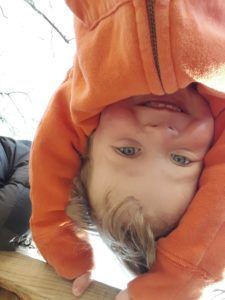
Transitioning Two Year Olds
We have created a specific class to meet the needs of the Transitioning Preschool Child. These children have reached their 2nd birthday up to approximately 3 years old. Most children in this group will be learning to use the toilet, but still be in diapers. We maintain a low ratio, usually 1 teacher with 6-8 children. This will vary from time to time as enrollment demands and as the children become more self-sufficient.
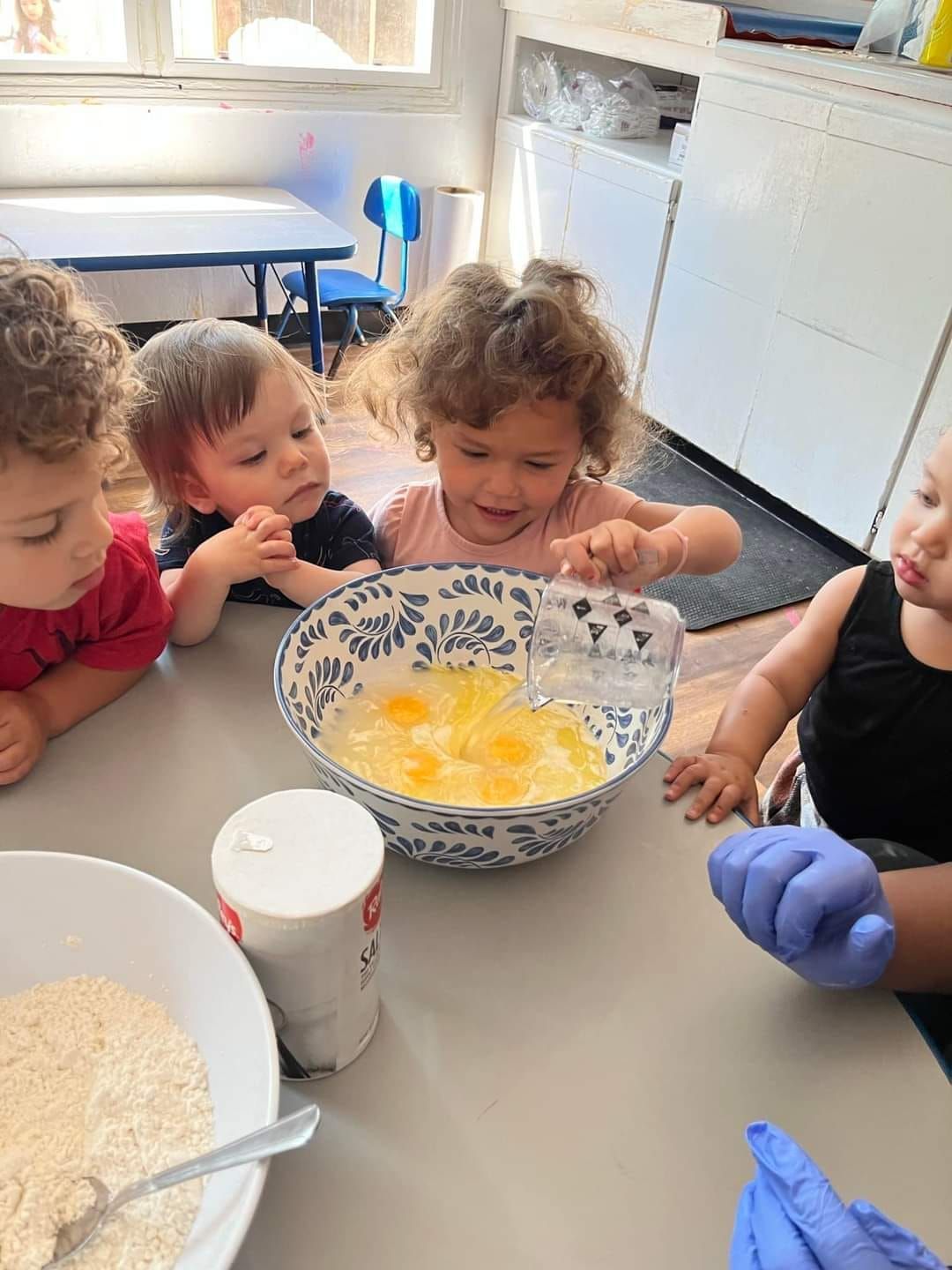
Busy Twos
In this classroom, we do not allow bottles or pacifiers at all. Children who are moving from our Infant/Toddler program (West Sac Campus, only) will have already begun to adjust to these changes, but new parents should prepare for these limitations. This is a busy, busy class. It is holds the same components as the older classes: Circle Time, Focus Time, Indoor and Outdoor Social Play and Music Time…but the time span expectations are a little shorter for the younger preschool child. Children will move to the next class, not based on age but on developmental readiness. The same reasoning may retain a child in the Transitioning Preschool Classroom.
Tuition is marginally higher in this class group to accommodate the lower ratio and to offset our costs for high quality disposable diapers and wipes, not Pull Ups. (We are not equipped to use cloth diapers.)

Independent Toileting
At Enlightened Play Preschools, we do our best to help parents who are teetering in the world of “Independent Toileting” to understand this process.
Uniqueness
First, we must all acknowledge that each child is different. When it comes to toileting independently, that could mean a 12-15 month difference, from child to child.
Parents must understand that your child’s interest in the toilet or desire may be way ahead of their ability. After all, your child is interested in many things that they are not capable of doing; from driving the car to carrying a heavy, glass bowl!
Physically your child must hold and release both urinary and bowel muscles. These don’t always develop at the same time (although there are a few parents out there cheering, because their little one did!) but some children can ‘hold’ before they can ‘let go’ or more likely, ‘let go’ before they can ‘hold’. So, it’s a waiting game. But waiting is part of your plan for success.
Then, when the waiting game has been assessed and you are fairly certain that all the brain synapses have connected with the muscles that do-what-they-do, then it’s time to assess if your child can: manage their clothing, their environment and verbalize their need to leave your presence. If a child of 2 years can: hold it, let it go and move their clothes…but he is in a playpen… that could be a real detriment to development. (Most children toilet independently between years 2 and 3).
Next Steps
So now, the stars are aligned and everything is in place for your child’s success. It’s the time to start Independent Toileting. Give you and your child, as well as any support people your plan. This should be about 3 days of commitment and practice. Really! Just 3 days. BUT it’s a 24 hour commitment. Just like going on a diet, or breaking any habit, it must be 24 hours a day. What good would healthy eating do if after bedtime you could eat all the chocolate cake you wanted?
Dedication
Toileting Independently will require practice and some dedication from you, and the entire parenting team. If Grandma wants to dote on your child, cut Grandma out of this 3 day event. Really. You need 100% support.
In an effort to make it easier, I caution you to resist adding new layers of transition for your child. What does that mean? Don’t add a potty chair. Don’t add a toilet seat insert, etc. The world is not full of potty chairs, it has toilets. Your child’s bottom is little and some toilets are big. Your child can hop up on the back of the sofa, on a swing at the park…they will learn to hop up the toilet. They will have to learn to hold themselves up with their little arms and balance. It’s okay. They won’t be flushed down. The worst thing that could happen is her bottom could get wet. (And it’s already getting wet in their diaper).
A Child’s Clock
If parents or caregivers tell children when to go, they are taking the step of judgement away from the child. Each child must learn their own body and the judgement of when to leave a fun activity and go to the less fun toilet. This is why we, at Enlightened Play are aware a child is working on learning these new skills, but are not “marching them into the bathroom on our schedule”. We may even encourage at times, “We’re going outside, see if you need to go potty.”
How Do We Integrate at School
This is why at Enlightened Play Preschools we wait for parents to have that 3 day success and then let us know you have had a successful 3 day toileting experience. Yes we wait for you. We tell parents to bring at least 3 full changes of clothes and get ready to be your support. We are ready then for helping your child use good judgement and be comfortable in an environment bigger than most homes and shared by other children.
100% 24 Hours All the Time
Make toileting an adventure. See all the toilets everywhere you go. All the different ways to flush. Different toilets, seats, seat covers and even toilet paper rolls! This will also ensure your child doesn’t shut down in public. Remember that we are models. Model to your child, “Oh I’m going potty before we get in the car.” “Oh, it’s almost bedtime I’m going potty.”
• 24 hours: at nighttime, at the restaurant, on a long car ride….24 hours. All the time. Set your child up for success.
• Avoid too much liquid before bedtime, but that’s not all.
• If you are giving your child a bottle – stop it.
• If they constantly have a sippy cup – stop it.
• They do not need it and will rehydrate at the next interval. Adults cut back on liquids or we know the consequences.
At night time, give him/her a choice between panties/underwear or nothing at all. This will help your child feel more in control. Place a sturdy towel under their bedsheet and another on the table next to his/her bed. Place a nightlight in the bathroom with a change of pajamas. Walk your child through this whole process AS IF they may have an accident, but one they are capable of handling. Just having this back up plan is very helpful. Being comforted that, “you know they can do it, you’re not going to be mad” relieves the pressure and it’s less likely they will be too nervous to get up to potty. (If your child is in your bed, it’s time to re-think this for many reasons.)
Success, Either Way
Avoid making toileting a BIG deal like “you’re going to be a big kid like Sally” or “I will be so proud of you when…”
Introduce toileting in a very matter of fact way. “Let’s try the toilet, this weekend and wear panties/underwear. Let’s try pottying in the toilet like Mom/Dad.” (Avoid asking your child, do you want to?)
After a day or so, you should know if you assessed incorrectly. If he/she is NOT ready, you’ll know. Not being ready can be emotional, too. He/she is just not ready. Then back it up, no big deal and wait it out. If you have not implied disappointment or anything derogatory, it’s easier to un-ring the bell. “Okay, we’ll wait until it is easier for you.”
Revealing your Issues
It might not be easy for you, the parents. It might be hard to allow him or her to have an accident on your beloved carpet, or in front of friends. It might inconvenience you on the weekend. Think of the car seat, changing sheets at night, or sleeping in your bed….Yikes! That’s why YOU must commit, in advance.
Pull-ups Do Not Work for Independent Toileting
Any type of diaper that absorbs is for keeping our babies dry. But for toileting, they are not your friend. Natural consequences are your friend. Feeling the wetness, the stickiness, the feeling of their bodies will help your child toilet independently when they CAN. Children must feel the wet to actually connect the sense of needing to go and the feeling of going. That’s why it’s “Which underwear do you want to wear?” Not, “do you want to wear underpants?” And this means ALL the time. If your child tends to hide in a corner when pooping, that makes sense. This is really a step closer to privacy in the bathroom. I encourage you to embrace the choice of underpants or no underpants so your child will seek out the toilet.
The Body Details
Children must be taught all the nuances of how to toilet BY THEMSELVES. (It’s like the familiar give them a fish or teach them to fish parable.) You the parent, need to teach your boy to lift the lid, or wipe it if he forgets. You the parent, need to teach your little girl to wipe from the back. All children need to understand how much toilet paper to use and how to “check” to see if they need to wipe again. Flush, then maybe flush again. This is really important. Children come to preschool, many times, expecting a teacher to thoroughly wipe their bottom just like when they were in diapers.
But they need to be responsible for trying to wipe and asking for help if they have not been able to.
Nobody’s Perfect
Accidents occur even if your child has been very successful. Why? Because in a busy and active world, toileting independently requires judgement. Judgement of time, the child’s ability to control their own body and the environment they are in.
Advice: Carry many changes of clothes. Don’t fret. And make changing their clothes your child’s job. Changing is hard work, which makes ‘going on the potty’ less time consuming and easier, a logical consequence. You want to engage that logical consequence.
Changing your Plan
Okay, you tried. She tried. He tried. It didn’t work. You will know. Too many accidents. Too much resistance. He wasn’t as ready as you thought. That’s ok. Remember you haven’t made it about “being a big boy”. You’re now able to say, “That’s ok. You will do it another time”. We’ll wait until next month. No pressure and no failure.
Keep your Head up!
Your child will be toileting independently. Someday soon. It will seem like a million years that you struggled with this issue…and then it will be gone in the blink of an eye. You may even look back and wish it was this easy, again.
Pre-K and Preschool
Preschool is time to learn who you are and what you like. We believe it is our job to make this easier for young children by offering them opportunities to try out new things and practice the skills that they will eventually master.
Directions and Balance
Our program emphasizes that teachers plan a balance of types of activities and styles to practice. They will practice working alone, working in small groups and working in large groups. Children will learn to follow directions and learn to lead, in big and small ways. We want to provide opportunities but not demand or create a stressful situation for any child. Most children thrive in this environment because of the balance we work hard to provide. We do our best to avoid too much indoor or too much outdoor time, which can just turn a good time into chaos.
The Building Blocks of Education
All the skills your child will learn in Kindergarten will be started here. We do not profess to teach your child to read, (although some children may do this on their own very young) but we will give him/her the building blocks for understanding letters, numbers, weights, measurements, volume, space and so much more. Beyond these academic tasks, we will weave into their understanding a rich understanding of other cultures, animals, terrains, tradition, other homes and peoples. We will do our very best to bring the rest of the world iintothe children to enrich their lives in our safe environment. We will teach your child to speak for themselves and to value other people’s opinions and learn empathy. We will listen to your child’s needs and comfort them as they are still young children, but we will not foster unhealthy dependence and will continue to cheer them on to their next personal success!
Learning while Playing
Preschoolers will learn to cut with scissors, write with pencils and yet we will not use workbooks, dittos or assign homework. Childhood is for learning through play and even though we know that they are learning all the time, we want your child to feel they have PLAYED all day long.
The Preschool and Pre-K class groups will organize activities for the specific group of children in the class at that specific time and will grow with them throughout the coming year. We will group children by their readiness, their fit by social/emotional and cognitive skills with their peers.
Enlightened Play Preschools is happy to provide that extra support for your child before and/or after their Kindergarten program at another school. We do not offer transportation, but both of our schools offer a morning or afternoon program that is perfect for most Kindergarten age children.
Coming back
Kindergarten can be an overwhelming experience and for many children. It’s a big leap to make to be in a larger class group and sitting for long periods of time, working on academics with new people. Coming back to a younger, familiar and more nurturing environment helps kids make a healthy adjustment to their first year of public or private school.
Late schedule? No Problem.
Typically Kindergarten schedules are given late in the year. Don’t panic! In most cases, we will be able to accommodate your half-day or partial day schedule and joyfully make this transition into the next phase of childhood.

